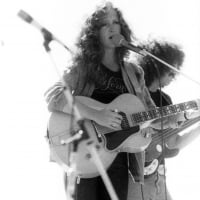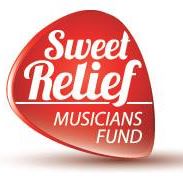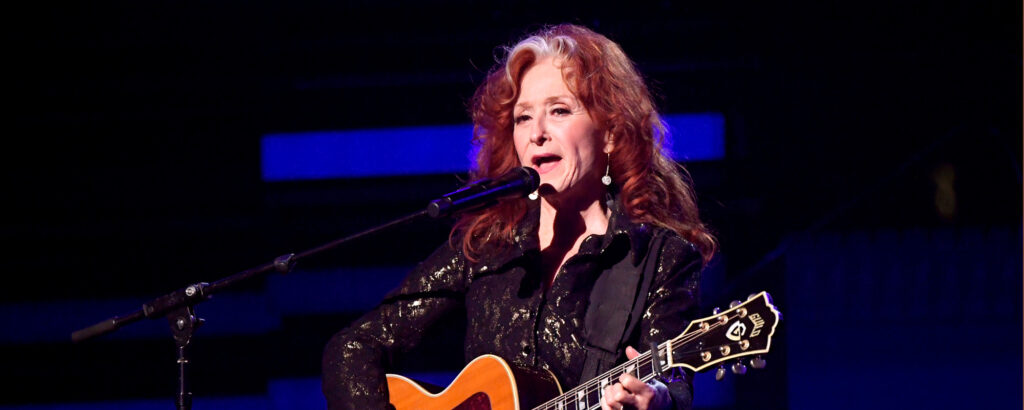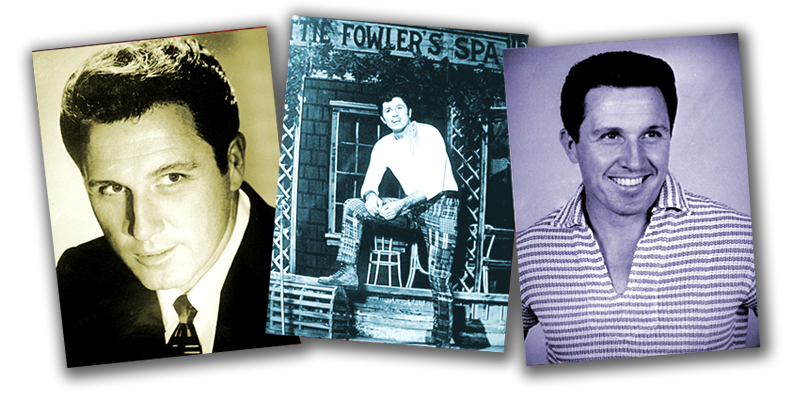
Bonnie Raitt in a movie with Middle America itself, John Travolta? Wait a minute. Is this the same Bonnie Raitt who is known as a political radical as well as a singer?
“I’m actually starting to take on some projects that I wouldn’t have considered a few years ago, because I have some things to do that unless I get the money I just can’t do, ” said former Cambridge resident Raitt, as she sipped a bloody mary last week in a Boston hotel.
Now a month shy of her 30th birthday, Raitt, who performs at Worcester Auditorium next Monday and the Music Hall next Wednesday nights, is making a fresh evaluation of her career. She has never viewed success as the end-all of existence, but now she realizes that more of it can cut the excessive time she needs to tour. She has traditionally made more money from touring than from record sales, but she is hoping that will change.
“I don’t want to be schlepping around touring all the time,” she says. “Although I still like it, I’ve got other things to do.” These include her continued politicking against nuclear power, her ability to finance a film on blues shouter Sippie Wallace, and her desire to produce records by other women (she just produced a demo tape by Toronto singer Joanne Mackell), especially politically aware women.
Appearing in the Travolta film, then, is a compromise but not a sellout, Raitt stresses. Called “Urban Cowboy,” it was shot recently in Texas. Bonnie played a country singer who sings a couple of tunes- Dave Rogers’ “Darlin’” and Rusty Weir’s “Don’t It Make You Wanna Dance?” As she explains: “We went and did it at Mickey Gilley’s club in Houston, which is the biggest honky-tonk club in the world – there’s even electric bull-riding there. The movie is about John Travolta coming in from the country. It came about after an article by Aaron Latham in Esquire, kind of like that Nik Cohn story in New York magazine that became ‘Saturday Night Fever.’”
Sales from the soundtrack album to the movie – which should be out either by Christmas or early next year – will help underwrite the Sippie Wallace film, according to Raitt’s plan.
“Jane Fonda is a role model to me, ” Bonnie says. “She takes on certain projects in order to make money. I mean, she’s got this workout/exercise salon that she just opened in Los Angeles precisely to fund the Campaign for Economic Democracy. I think with an artistic reason you can do things like that, although I wouldn’t do a Prell commercial or anything like that.”
The film about Wallace, the 81-year- old Detroit blueswoman who has had a profound influence on Raitt’s own singing, is being directed by award-winning Cambridge filmmaker, Midge McKenzie, whose series on women’s suffrage, ”Shoulder to Shoulder,” has been shown on PBS stations.
The Wallace film is underway, but has been left hanging. “We shot three days in Baton Rouge at a place called the Kingfish when Muddy Waters and I toured through the Southwest a few years ago, ” says Bonnie. “Now it’s going to take several hundred thousand dollars to finish it. We’re aiming for a feature-length film that will be shown in houses like the Orson Welles Cinema. Then we’ll eventually cut it down and show it on PBS or in Europe. But unless I’m more famous we can’t get any funding. “Raitt’s pragmatic success-is-a- means-to-an-end philosophy is unusual enough in this era of the self-indulgent rock star, but so are some of her other values. For one, she doesn’t believe in working for the major rock promoters in cities along her tours. The exception is San Francisco’s Bill Graham, who has become a personal friend. But elsewhere she prefers the underdog. In Boston, for instance, she won’t work with the region’s magnate, Don Law.
“I think people shouldn’t have monopolies on towns,” she says. “I don’t agree with it. It’s against my political feelings and my belief in economic democracy. I think there ought to be lots of small little neighborhood stores and little colleges and lots of little bands and little record labels. I just don’t like the ‘big-is-better’ idea. I don’t like monopolies or cartels of any kind. And even though I’m on Warner Brothers Records, that’s still a means to an end.”
In another unusual belief – considering she is a recording artist – she praises buyers who stayed out of the stores this summer to protest the skyrocketing price of albums. “I think it’s great that the music business has to pull back on what they’re spending because kids are revolting and not buying records. Also, I’m impressed by the fact that blank-tape stock is zooming because everybody has cassette players. I wondered why people weren’t hip enough to do that for years. Yet I know that’s biting the hand that feeds me. Here I am encouraging people to do that and congratulating them for rebelling against high prices and consumerism.” As the daughter of Broadway singer John Raitt, Bonnie was far from poor as a child, yet she quickly learned to spot and rebel against the shallowness of material things. She grew up around Los Angeles and recalls that “in my father’s business if you didn’t drive a Cadillac you were not doing well. My father loved to drive around in a Jeep and wear a funky hat and cutoffs, but my mother would have to remind him when he was going into Beverly Hills to take the Cadillac, because you’re only as hot as people think you are.”
During Bonnie’s “punk-beatnik” period, she came east to attend Radcliffe. “I almost went to Pembroke but I was too fruity. And I wanted to be at the scene of the action in Cambridge. “She eventually dropped out of Radcliffe, but she stayed in Cambridge a total of six years, 1967- 1973, playing in local clubs and learning and refining the blues.
“I lived on Oxford street opposite Porter Square, right where Somerville avenue and Beacon street come together. I had lived on Eustis street and then I moved up about three blocks. Chris Smither used to live on Garfield street, and we’d spend all our afternoons playing guitar together.” Smither, who still lives in Cambridge, opened for Raitt during a warmup show last week at Fitchburg State College. “It was great seeing him. He’s really good, and hopefully he’ll be making a record soon.”
Raitt, who first earned money in Cambridge as a housemaid, ended up becoming a popular performer in the bar scene, notably in Jack’s on Mass. avenue. She also acquired quite a reputation as a carouser. An old Globe feature article once quoted this consensus advice from her peers: “Don’t go boozing with Bonnie unless you have three days to recuperate.”
“Oh yeah, ” says Bonnie sheepishly, as she still nurses her bloody mary. “That’s when (Spider John) Koerner used to play Jack’s bar on Monday nights, and Reeve Little played at the Casablanca. So if you closed one bar, then you’d hop over to another. Then you’d go to somebody’s house and play music with Peter Bell or Peter Johnson or Paul Geremia or whoever, until all hours.”
Not surprisingly, Bonnie has slowed down since then. “Oh, I still like to party,” she qualifies. “It’s just a question of being responsible. When you have to play an hour and a half a night and it’s a really hard rock show, then it’s exhausting. It’s not like there are other people in the band who can take a vocal,like Fleetwood Mac. I’ve got to do the whole thing. And I will be 30 next month. Most of my friends have pulled back quite a bit. Lowell George’s (of Little Feat) death was something that hit all of us in terms of realizing that in fact that stuff does catch up to you if you don’t watch it. “Having outgrown the Cambridge bar scene and needing a change, Raitt moved back to Los Angeles in 1973. “So now I live in a house that’s gray with little white-paned windows. It looks like Connecticut or something, but it’s in the middle of LA with palm trees all around it. I guess I’m still trying to blend the East and West coasts.”

As her career has expanded, so has her concern for the environment and her determination to fight nuclear power. She and Jackson Browne have led the anti-nuke crusade among contemporary musicians, and she participated in last month’s landmark New York benefit concerts sponsored by MUSE (Musicians United for Safe Energy).The five concerts, also featuring James Taylor, Bruce Springsteen and others, netted about $500,000 for the anti-nuke cause. Raitt has since been busy helping to ready a live album from the proceedings (due by Christmas) and a documentary film.
As for future MUSE concerts, she says: “Donna Summer, Robin Williams, Aerosmith, the Cars, Blondie, John Denver and the Eagles are interested. And the Grateful Dead and the Starship will probably be doing one at Oakland Coliseum. We also want to do some nights at the Universal Amphitheater- an outdoor theater in LA about five minutes from where I live – and I’d like to see a two-day folk festival both in LA and San Francisco, with some traditional blues acts and bluegrass groups, then headliners at night. That would be with a combination energy fair. And I’d like to get the jazz concerts in Montreux, Switzerland to donate one night to MUSE.”
Raitt has been following anti-nuke developments around the country, including the controversy surrounding the Seabrook, N.H., power plant construction. However, she withholds judgment at the moment as to whether she approves of the recent attempts by protesters to forcibly occupy the Seabrook site. “I haven’t made up my mind yet on that. I don’t know. I just don’t have a public statement on that right now. ” As we near the end of our talk in the hotel, Raitt asks if she can hitch a ride over to Harvard Square, where she is to meet Midge McKenzie and talk about the Sippie Wallace film project. Almost as an afterthought, as we jaywalk across the road ( “I love it!” – she shrieks – “in LA when you make the cars stop it’s a political act . . . “), she brings up her new record, “The Glow. ” Needing to promote a new record, theoretically, is the reason many artists grant interviews in the first place. But not Bonnie, who is embarrassed about blowing her own horn.
The new record was produced by Peter Asher, the first one he’s done for Bonnie after an impressive track record with Linda Ronstadt and James Taylor. But before settling on Asher, Bonnie had also considered Jon Landau – Springsteen’s producer – for the job. ”Those were the two people in my mind that I thought had the best chance of blending the direction I wanted to go in, which was a harder rock type of direction with more spontaneity and less overdubs.”
Raitt recorded her vocals live on the first or second take. Asked whether she feared that Asher, known for his smooth style, might streamline her vaunted rawness, she says, “No, I think the rawness is actually back in there. It sounds closer to what I sound like live, and everybody has told me – and I happen to believe it myself – that my live performances outshine the recorded versions of my songs.”
The single from the album will be her jaunty cover of Robert Palmer’s tune, “You’re Gonna Get What’s Coming.” Just how important is a hit single at this point?
Turning serious – for she once said years ago she never wanted a hit single – Bonnie adds almost apologetically that “I’m stuck at 350,000 album sales each time out. To break beyond that, because there’s so much new product coming out, you have to have a hit single to sell more albums.”
She gets more to the point when she says that “I would like to be doing two benefits for every five gigs, but I just can’t. I can’t do what I want to do with the level I’m at. I can’t do it without a hit record.”
That said – and the self-promotion out of the way – Bonnie pauses to look out the window as we putter along in my car. We pass the Charles River, along which she jogged the day before. “I like to jog at dusk when I have the time,” she says.
Then as we approach Harvard Square, Bonnie peeks out at the brick architecture and at the people buzzing every which way on this warm autumn afternoon.
“Gee, this is so neat,” she says in a childlike voice. “I wish I lived here again.”







 Visitors Today : 132
Visitors Today : 132 Now Online : 1
Now Online : 1



































































































